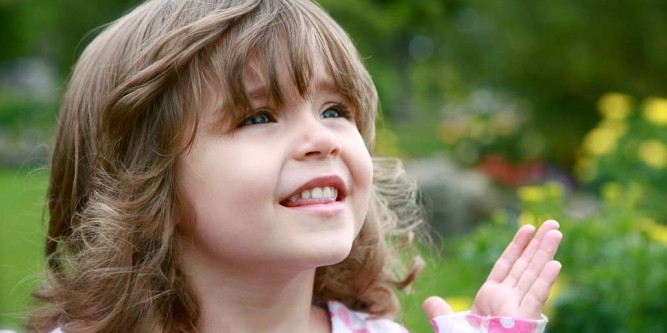“Let the word of Christ dwell in you richly, as you teach and admonish one another in all wisdom, and as you sing psalms and hymns and spiritual songs with thankfulness in your hearts to God.” (Colossians 3:16)
Worship, much like anything else, is a skill that is learned through teaching, modeling, and practice. Many younger children associate worship time with songs and hand motions; they don’t necessarily connect the songs to personal expressions of praise to God. Worship becomes an activity instead of a personal interaction with the Triune God.
God’s Plan for Worship
The Scriptures are clear that God, Himself, should be the sole focus of our worship. “You shall worship the Lord your God and him only shall you serve” (Matthew 4:10), and, “You shall have no other gods before me” (Exodus 20:3). When it comes to worship, God is jealous that His people exalt Him alone.
Richard Foster states, “We desperately need to see who God is: to read about his self-disclosure to his ancient people Israel, to meditate on his attributes, to gaze upon the revelation of his nature in Jesus Christ.”1
We worship God for who He is and what He has done. Our worship experiences ultimately shape who we are and how we interact with others. Foster continues, “To stand before the Holy One of eternity is to change. Resentments cannot be held with the same tenacity when we enter his gracious light. To worship is to change.” 2
A Practical Exercise: Picturing Jesus
Matt, worship leader during the weeklong VBS program, watched a group of preschool children. The kids were learning new songs with catchy tunes, hand motions, and dance moves. Each class that cycled through the large-group time caught on to the new songs quickly. How precious it was to see 3-year-olds focusing on each move and each word!
The children loved the music, the energy, and the engaged small group leaders who executed the motions with them! After observing several songs, Matt cued the song, “Give Me Jesus” and announced,
“I have something special I want you to do with me. I want everyone to close your eyes; now listen closely and keep your hands to yourself. As your eyes stay closed, I am going to play a worship song, and I want you to think only about Jesus. Picture Him in your mind. You might picture Him being with you right now, at your home, your school, or with your family. Now when you sing and worship Him, I want you to sing TO HIM! Jesus loves it when we worship Him—it’s one of His favorite things.”
As the song started, the children closed their eyes and looked very focused. Some sat calmly, other stood up, but all were focused. As the song sweetly progressed, the children chose different worship postures based of the modeling they’d received beforehand! Matt smiled as he watched two boys in the front put their hands on their laps and bow their heads; another girl looked up with her eyes closed and displayed a warm smile. One child stretched his arms towards the ceiling and sang confidently. A few kids in the back struggled to maintain focus, so a teacher gently re-directed their attention back to Jesus.
Those precious minutes with Matt and the preschoolers was the highlight of my day!
Conclusions
Young children can engage in worship. They can connect with God through upbeat songs with hand-motions, as well as soft, heartfelt songs. With directed shepherding, children can worship God and understand the personal nature of praising the Lord for who He is and what He has done.
Practical Tips for Leading Young Children in Worship
- Keep the songs simple
- Mix catchy songs and slow songs
- If you use hand-motions, teach them before the song
- Include live interaction with a worship facilitator
- Set clear boundaries for worship time
- Encourage kids to “picture Jesus” and sing directly to Him
- Invite the teaching team to redirect distracted children
- Model different ways children can use their bodies to show praise and reverence to God (sitting, standing, bowing, etc.)
1Foster, Richard J. Celebration of Discipline, Harper-Collins, 1978, p.160
2ibid, p. 173
__






